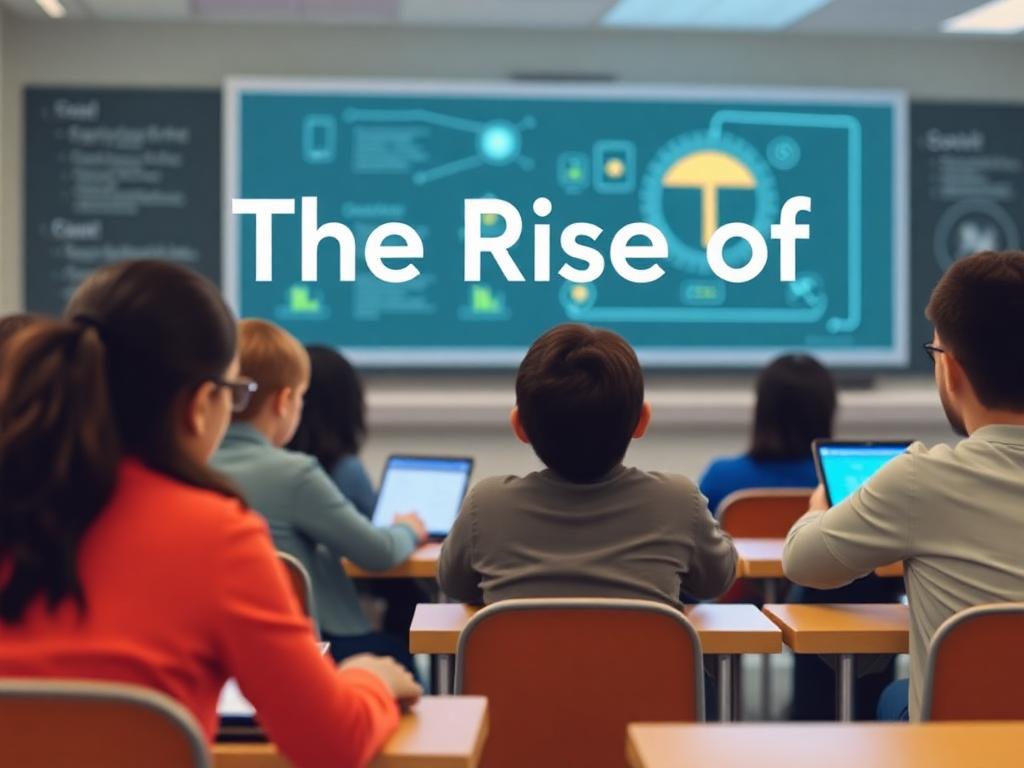Introduction to Virtual Reality in Education
Virtual reality in education is a technology that creates immersive and interactive learning experiences using 3D simulations. It allows students to explore different environments, conduct virtual experiments, and interact with subjects in ways that traditional learning cannot offer. With the help of VR headsets, students can visit historical places, explore space, or practice real-world skills in a controlled environment.
-
How VR is Transforming Traditional Learning Methods
Traditional learning methods rely on textbooks, lectures, and memorization, which can sometimes make learning difficult or less engaging. Virtual reality in education changes this by providing hands-on experiences that improve understanding and retention. For example, medical students can practice surgeries in a virtual setting, and language learners can immerse themselves in foreign environments. By making lessons interactive and realistic, virtual reality in education helps students grasp complex concepts more easily and enjoy the learning process.
-
How VR Enhances Student Engagement
Traditional learning methods can sometimes feel boring and uninteresting for students, making it hard to stay focused. Instead of just reading about historical events, students can visit ancient civilizations in VR. Science students can conduct virtual experiments, making learning more interactive. This approach keep students engaged and motivated leading to better learning outcomes in virtual reality in education.
-
Creating Realistic Simulations for Better Understanding
One of the biggest advantages of virtual reality in education is its ability to create realistic simulations. Students can explore the human body in 3D, practice real-world skills, or even experience space travel without leaving the classroom. These simulations make it easier to understand complex topics by providing a visual and interactive learning experience. With the help of virtual reality in education, students can gain practical knowledge and develop problem-solving skills in a safe and controlled environment.
-
Virtual Reality for STEM Education
Science experiments are an essential part of learning, but they can sometimes be difficult to conduct in a traditional classroom. Virtual reality in education allows students to perform interactive science experiments in a virtual lab without needing physical equipment. They can mix chemicals safely, observe microscopic organisms, or explore the human body in 3D. This hands-on experience makes learning more exciting and helps students understand scientific concepts better in virtual reality in education.
Engineering and physics involve complex theories that can be hard to visualize through textbooks alone. Virtual reality in education helps students interact with 3D models of machines, bridges, and electrical circuits, making abstract concepts easier to understand. Students can also conduct physics experiments, such as testing gravity or motion, in a virtual space. By using virtual reality in education, learners gain a deeper understanding of engineering and physics principles in a fun and engaging way.
-
VR in Medical and Healthcare Training
Medical students can benefit greatly from virtual reality in education, especially in surgical training. VR allows students to practice surgeries in a safe and controlled environment before working with real patients. These virtual surgery simulations help students gain hands-on experience, enhancing their skills without the risk of making mistakes on live patients. This innovative approach to medical training makes it easier to master complex procedures and improve confidence, all through the power of virtual reality in education.
With 3D models of the human body, students can explore organs, muscles, bones, and blood vessels in incredible detail. This hands-on experience helps them better visualize and understand how the body works.

Historical and Cultural Exploration with VR
Instead of just reading about famous sites, students can explore them in 3D. They can walk through ancient ruins, visit world-famous museums, and experience history in an immersive way. This interactive method of learning makes history more engaging and memorable, allowing students to gain a deeper understanding of the past through virtual reality in education.
VR-Based Language Immersion Programs
Virtual reality in education offers a unique way for students to immerse themselves in language learning. VR-based language immersion programs allow students to practice speaking and listening in real-world situations, like ordering food at a restaurant or asking for directions in another country. This immersive experience helps learners become more comfortable with the language, improving their vocabulary and fluency. In VR, students can engage in different scenarios that require them to use their language and interpersonal skills, like job interviews or presentations.
Assisting Students with Disabilities Using VR Tools
Virtual reality in education can be especially beneficial for students with disabilities. VR tools provide customized learning experiences that accommodate various needs, such as helping students with visual impairments through auditory cues or offering hands-on activities for those with physical disabilities. Whether a student is a visual, auditory, or kinesthetic learner, VR can be tailored to match their needs. For example, visual learners can benefit from 3D simulations, while kinesthetic learners can engage in interactive, hands-on activities.
Emerging Trends and Innovations in VR Learning
Virtual reality in education continues to evolve, with new trends and innovations shaping the way students learn. One emerging trend is the integration of artificial intelligence (AI) into VR experiences, allowing for more personalized and adaptive learning paths. AI can track a student’s progress and adjust the virtual environment to match their pace and learning style.
Conclusion:
Virtual reality in education is transforming the way we approach learning by making it more interactive and immersive. From enhancing student engagement through realistic simulations to offering hands-on experiences in various fields like STEM, medicine, and history, VR is making learning exciting and effective. It helps students understand complex topics in a way that traditional methods can’t, offering personalized and dynamic learning experiences.
Looking to the future, virtual reality in education will continue to evolve with advancements in AI, making learning even more tailored to individual needs. VR tools are becoming more accessible, offering opportunities for students worldwide to experience the benefits of this innovative technology.